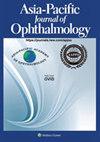Low-concentration atropine for controlling myopia onset and progression in East Asia
IF 4.5
3区 医学
Q1 OPHTHALMOLOGY
引用次数: 0
Abstract
Purpose
Over the past few years, there has been a rapid accumulation of data on the use of low-concentration atropine for myopia control, especially in East Asian children, with its effectiveness varying in different studies. This review aims to evaluate the current evidence surrounding the efficacy and safety of low-concentration atropine in the management of myopia onset and progression in East Asia.
Methods
Clinical trials involving atropine for myopia control in East Asia were reviewed.
Results
Atropine has been shown to reduce myopia progression in East Asian children, compared with placebo. Its efficacy is concentration-dependent, with 1 % atropine yielding the greatest effect in slowing myopia progression by over 70 %, but it is associated with significant rebound and side effects. Lower concentrations also confer significant myopia-control effects while maintaining a more acceptable safety profile, with relative reductions of 67 % and 43 % reported for 0.05 % and 0.025 % atropine, respectively. While 0.01 % atropine showed the least effect compared to 0.05 % and 0.025 %, it still yielded a significant efficacy in slowing myopic refraction. Over two years, 0.05 % atropine reduced the incidence of myopia by nearly 50 %, demonstrating greater effectiveness than 0.01 % atropine. This effect was particularly notable in children with low hyperopic reserves (< +0.75 D), but not in those with higher reserves.
Conclusions
The current evidence shows that low-concentration atropine plays a crucial role in managing myopia in East Asian children and demonstrates satisfactory safety profiles. Timely administration of the most effective and safest concentration can potentially prevent sight-threatening complications and subsequent vision loss.
低浓度阿托品在东亚地区控制近视的发生和发展。
目的:在过去的几年中,关于使用低浓度阿托品控制近视的数据迅速积累,特别是在东亚儿童中,不同研究的效果不同。本综述旨在评价目前东亚地区低浓度阿托品治疗近视发生和发展的有效性和安全性的证据。方法:回顾了东亚地区使用阿托品控制近视的临床试验。结果:与安慰剂相比,阿托品已被证明可以减少东亚儿童的近视进展。它的疗效是浓度依赖性的,1%的阿托品在减缓近视进展方面的效果最大,超过70%,尽管它与显著的反弹和副作用有关。较低浓度的阿托品也具有显著的近视控制效果,同时保持了可接受的安全性,0.05%和0.025%阿托品的相对降低率分别为67%和43%。与0.05%和0.025%相比,0.01%的阿托品效果最差,但仍有显著的疗效。两年后,0.05%的阿托品使近视发生率降低了近50%,比0.01%的阿托品更有效。这种效果在低远视储备(< +0.75 D)的儿童中尤为显著,但在远视储备较高的儿童中则不明显。结论:目前的证据表明,低浓度阿托品在治疗东亚儿童近视中起着至关重要的作用,并且具有令人满意的安全性。及时给予最有效和最安全的浓度可以潜在地预防威胁视力的并发症和随后的视力丧失。
本文章由计算机程序翻译,如有差异,请以英文原文为准。
求助全文
约1分钟内获得全文
求助全文
来源期刊

Asia-Pacific Journal of Ophthalmology
OPHTHALMOLOGY-
CiteScore
8.10
自引率
18.20%
发文量
197
审稿时长
6 weeks
期刊介绍:
The Asia-Pacific Journal of Ophthalmology, a bimonthly, peer-reviewed online scientific publication, is an official publication of the Asia-Pacific Academy of Ophthalmology (APAO), a supranational organization which is committed to research, training, learning, publication and knowledge and skill transfers in ophthalmology and visual sciences. The Asia-Pacific Journal of Ophthalmology welcomes review articles on currently hot topics, original, previously unpublished manuscripts describing clinical investigations, clinical observations and clinically relevant laboratory investigations, as well as .perspectives containing personal viewpoints on topics with broad interests. Editorials are published by invitation only. Case reports are generally not considered. The Asia-Pacific Journal of Ophthalmology covers 16 subspecialties and is freely circulated among individual members of the APAO’s member societies, which amounts to a potential readership of over 50,000.
 求助内容:
求助内容: 应助结果提醒方式:
应助结果提醒方式:


